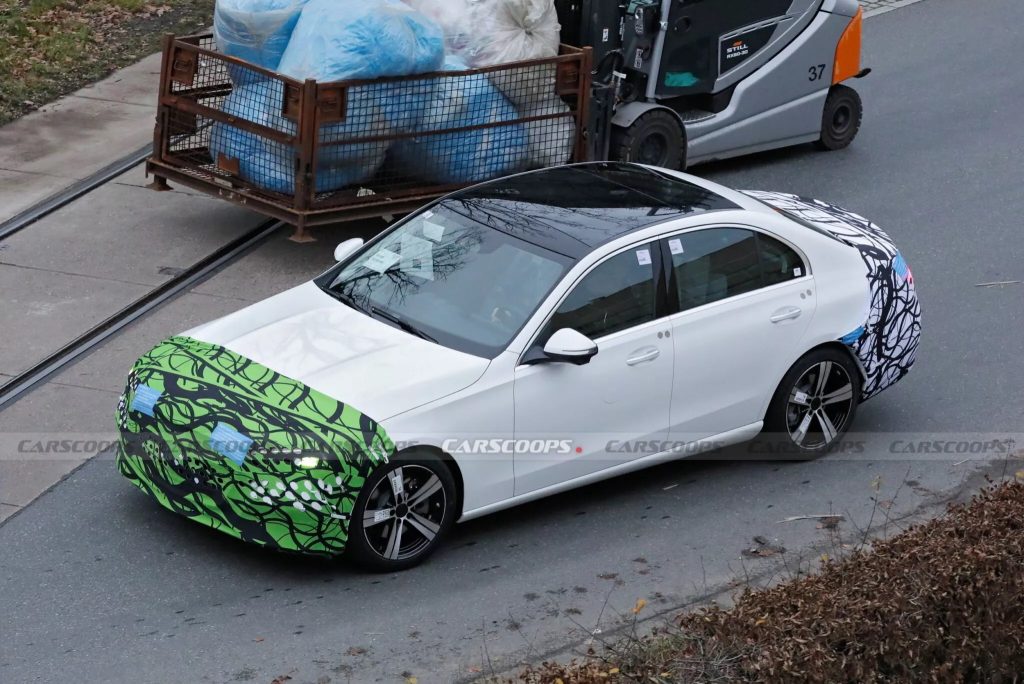
Environmental protection is a top priority at the plant operated by EvoBus GmbH in Neu-Ulm. For years now, the facility has been carrying out numerous projects with the aim of developing environmentally friendly products and production processes. Such efforts not only help the environment but also reduce costs, as evidenced by the fact that the Neu-Ulm plant boasts the lowest energy costs per square meter of all Daimler commercial vehicle plants in Germany. This makes the plant a benchmark in the Group.
The latest contribution to environmental protection made is an 18,000-square-meter photovoltaic system mounted on the roof of the assembly building. The photovoltaic system is a joint undertaking of Stadtwerke Ulm/Neu-Ulm GmbH, Phoenix Solar AG, and EvoBus GmbH. This joint project counts as a remarkable example of cooperation between the public sector and the industry. At the same time the system in Neu-Ulm, which was officially inaugurated today, is the largest photovoltaic system built on Daimler premises. The system has a peak output of 2.3 megawatts (2,300 kilowatt) electricity, which is enough to cover the electricity needs of around 650 households for an entire year. What’s more, it saves approximately 2,000 tons of CO2 per year by comparison with a modern coal-fired power plant.
The list of green initiatives at the EvoBus plant in Neu-Ulm is long. One prominent example is the plant’s “E+” project, which is designed to significantly improve energy efficiency, lower costs, and reduce the strain on the environment. Whereas the new photovoltaic system marks an important milestone in energy conservation, “E+” is about more than just solar energy, as the project seeks to enhance efficiency in every conceivable area. For example, since 2006 the Neu-Ulm plant has reduced its consumption of natural gas for heating purposes by nearly 25 percent. In the past, giant energy-guzzling heating fans used to swirl warm air into the factory halls, but now radiant heating panels installed in the ceilings send heat down to the factory floor. “Even in the winter, you always have the feeling that the sun is shining in our halls,” says Horst Uhl, head of Plant Infrastructure at EvoBus. Even better than that is the fact that the new heating unit eliminates emissions of more than 2,200 tons of CO2 per year.
Many ideas from the workforce
The special thing about the “E+” project is that any employee can contribute his or her energy-saving ideas to it. Repeated internal idea competitions have already produced many small improvements, which in sum are generating huge savings potential. “We promote environmentally responsible behavior at EvoBus by providing relevant information and advanced training to all of our employees,” says Wolfgang Hà¤nle, the head of EvoBus Production, who is responsible for the Neu-Ulm plant. “We give our people responsibility, inform them about environmental regulations, and reward their good ideas and exceptional performance.”
EvoBus has invested almost €70 million in the Neu-Ulm plant over the last two years and has consistently made sure that new environmentally friendly technologies are always part of the package. The plant’s bus paint shop – the most modern facility of its kind for buses ever since – has reduced its paint consumption by more than 40 percent and its solvent and dust emissions by approximately 50 percent. The use of improved drying processes, energy-saving motors, and heat recuperation systems has also lowered energy and heating costs.
The new EvoBus Replacement Parts Logistics Center, which opened in February 2008 in Schwaighofen, was also designed with ecology in mind. The center’s new administration building cleverly combines energy efficiency with renewable energy sources in a system that obtains 80 percent of the energy needed for heating and cooling the building directly from the environment – free of charge. It does this with the help of a heat pump that uses the groundwater at the site as a source of energy.
























